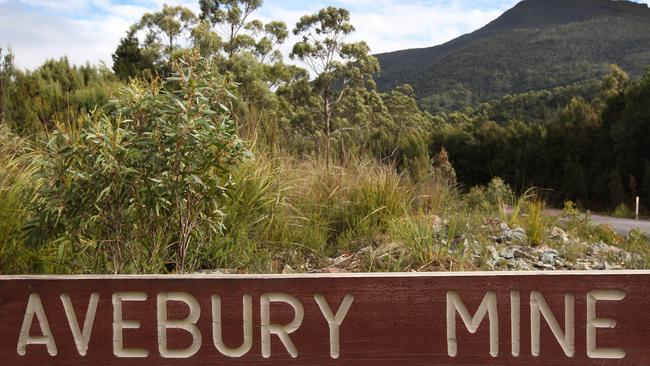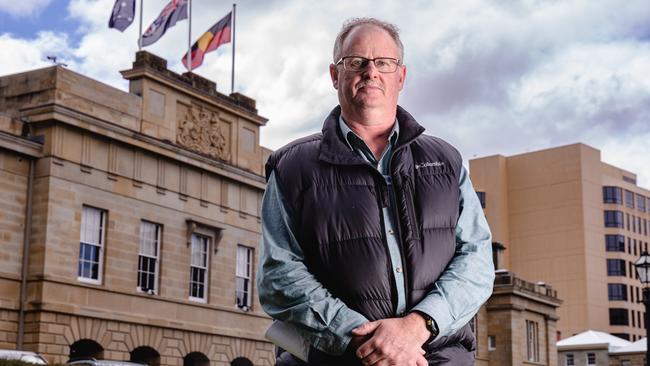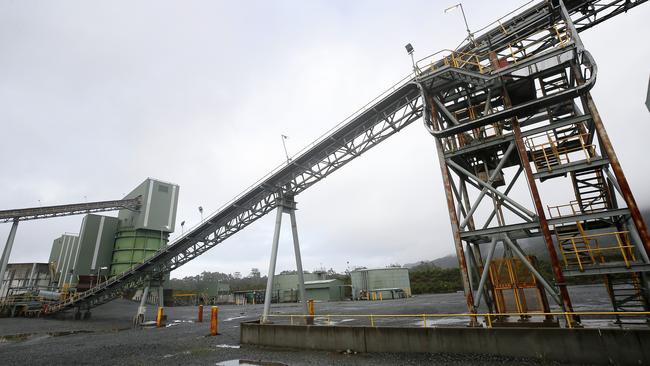Tasmania’s West Coast: Drive in drive out workers taking $71m out of region
The impact of drive-in, drive-out workers on the West Coast is “worse than we thought”, Mayor Shane Pitt says as he met with the Premier to work out how to bolster the region.

Tasmania
Don't miss out on the headlines from Tasmania. Followed categories will be added to My News.
ABOUT one-third of workers on Tasmania’s West Coast live outside the area and take $71m in wages away from the region each year, a new report reveals.
The drive-in, drive-out workers, including 8 per cent who fly-in and fly-out from interstate, also earn roughly double that of local workers.
DIDO workers are those who commute and live more than 100km for their workplace.
The 30-page report, titled The changing nature of employment on Tasmania’s West Coast, was commissioned by the West Coast Council and prepared by Professor Richard Eccleston, Dr Lachlan Johnson and Megan Langridge.
It also found 68 per cent of non-resident workers were employed in the mining industry with about 675 of the 2140 people employed on the West Coast in 2021 living more than 100km from their work.
“The West Coast has a high number of millennial-aged (20-35 years) FIFO/DIDO workers,” the report said.
“These are considered desirable potential regional residents because they include families and early-to-mid career workers who have the potential to become long-term community members.”

Prof Eccleston said it was “surprising” that one-third of West Coast workers commuted more than 100km which created a “range of challenges and sustainability issues”.
He said there was evidence of high levels of DIDO workers “hollowing out” regional communities.
“On the West Coast, 42 per cent of salaries effectively leave the community making it more difficult to provide services for residents.
“Our detailed analysis of 2021 census data revealed that 31 per cent of workers on the West Coast live outside the community, the highest in the state, and this percentage has more than doubled over the last 15 years.
“In terms of the payroll, around $71m, is effectively leaving the area.
“It tends to be higher-paid workers, mostly in mining, but also in terms of key services, who aren’t living in the community.”
After speaking to workers, Prof Eccleston said a lack of housing prevented many from living on the West Coast.
“We need to think about innovative ways of increasing the availability of housing on the West Coast, but it’s also the broader kind of social and community services, like health care and there’s an acute shortage of child care on the West Coast.”
He said as demand for base metals and copper grows and energy projects were developed, it was important to plan for the future in a way “that doesn’t disrupt the long-term residents”. “The underlying causes of long-distance commuting are complex, and we need a collaborative approach to improving housing, services, and infrastructure so that more workers and their families can live on the West Coast.
“Many of Tasmania’s most important industries are based on the West Coast and it is important we develop creative strategies to ensure the long-term sustainability of the communities that support them.”
Population growth key to reversing wealth drain, says mayor
THE prevalence and impact of drive-in, drive-out workers on the West Coast is “worse than we thought”, Mayor Shane Pitt says.
He was pleased, he said, that the council “bit the bullet” and commissioned the report into employment on the West Coast and had already met Premier Jeremy Rockliff to discuss the report.

“We always knew there was an issue on the West Coast and we’ve now got a document that proves what we thought is correct,” he said.
“It’s a lot worse than most of us thought.
“We knew a fair percentage of money left the West Coast but we did not appreciate that a fair percentage of $71m is spent elsewhere.
“We will use the report not just with government but all industries here – we will put the figures on the table.”
Mr Pitt understands that increasing housing is a priority.
“Our housing stock is not what people today expect. We love the old miner’s cottages but if people come from the mainland they want a bit more. There’s also not many serviced blocks of land around either.”
The West Coast faces different challenges, Mr Pitt says, to the rest of Tasmania and has flagged a sustainability fund be established.

“These workers are essential to keep our booming mining, agricultural and aquaculture industries viable but the population on the West Coast has been undergoing a long-term decline with fly-over effects creating a hollow economy and lack of liveability.
“Demographic projections from the report have projected further decline in the order of 30 per cent by the early 2040s, which is the steepest downward trajectory in the state.
“An improved West Coast is vital to a thriving Tasmania.”
Mr Pitt said population growth was a key to strengthening the economy.
“Whilst mining payments increase our economic activity, it dramatically raises the cost of living and drives the people out when the funds don’t go back into the community.”
Mr Pitt also wants the removal of the exemption from rates for Hydro Tasmania dams and a review of planning laws and royalties’ distributions and regional sustainability fund fees put back into local communities.
“These initiatives will help level the playing field for the West Coast and achieve better outcomes.”



